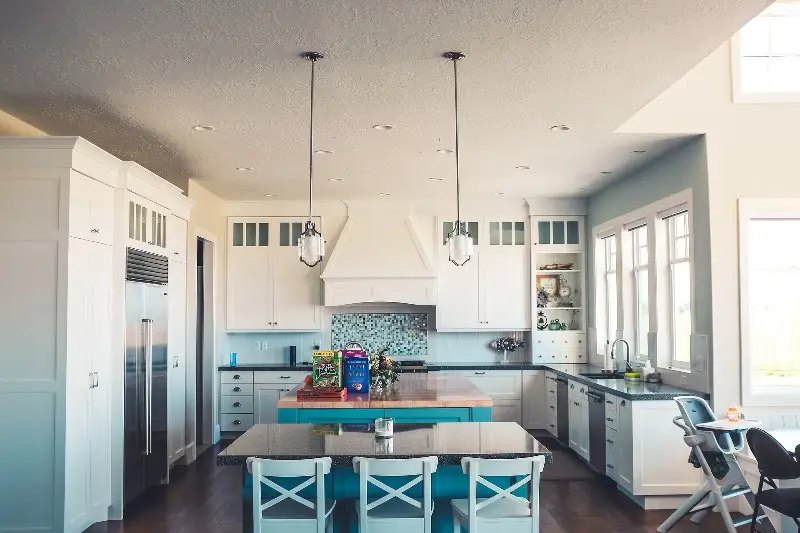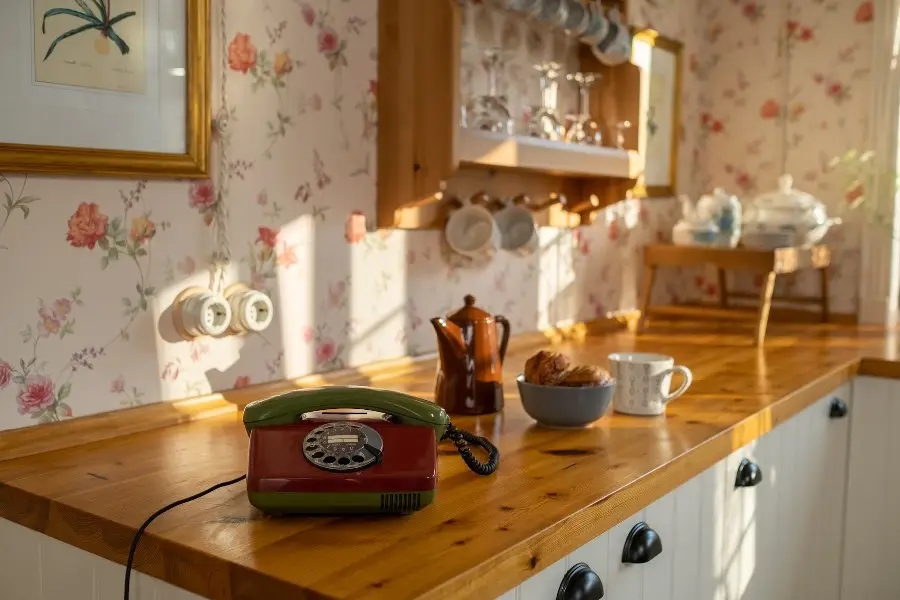The Ultimate Guide to Selling Your Home Without a Real Estate Agent

Selling your home without a real estate agent—commonly called “For Sale By Owner” (FSBO)—can be a rewarding way to save thousands in commission fees. But going it alone requires planning, preparation, and a solid understanding of the process. In this guide, we’ll cover everything you need to know to successfully sell your home independently, from preparing your property to closing the deal. 1. Preparing to Sell Pros and Cons of Selling FSBO Pros: Save on agent commission, typically 3% of the sale price. Maintain complete control over the sale process. Personalize your approach to marketing and showings. Cons: More time-consuming than working with an agent. Navigating paperwork and legalities can be challenging. Easier to miss things without professional advice. Determining Your Home’s Value To set a competitive price: Use online valuation tools like Zillow or Redfin. Research recent comparable sales (comps) in your neighborhood. Consider hiring a professional appraiser for an accurate valuation. Home Improvements and Staging Boost your home’s appeal with simple upgrades: Freshen up paint in neutral tones. Declutter and depersonalize spaces. Invest in curb appeal with landscaping or minor exterior repairs. Paperwork and Legal Requirements FSBO sellers must handle critical documents, including: Property disclosure forms. Sales contract templates (consult a real estate attorney if needed). Closing documents required in your state. 2. Marketing Your Home Creating an Effective FSBO Listing A compelling listing includes: A clear headline (e.g., “Spacious 4-Bedroom Home in Prime Location”). Detailed property description highlighting key features. Accurate pricing based on market research. Best Platforms for Marketing FSBO Listings Third-party sites like Zillow and Trulia. Social media platforms like Facebook Marketplace. Local community boards or neighborhood websites. Tips for High-Quality Photos and Descriptions Use natural light for interior shots. Capture wide-angle photos of each room. Highlight standout features like hardwood floors or remodeled kitchens. Hosting Open Houses and Showings Schedule showings at convenient times for buyers. Prepare handouts with property details and contact information. Ensure the home is clean and inviting during visits. 3. Negotiating Offers Evaluating Offers and Identifying Serious Buyers Verify buyer pre-approval or proof of funds. Compare offers based on price, contingencies, and closing timelines. Counteroffers and Contingencies Be prepared to negotiate on price, inspection results, or closing costs. Understand common contingencies, such as financing or inspection clauses. Handling Negotiations Independently Remain professional and avoid emotional reactions. Use scripts or templates for clear communication with buyers. 4. Closing the Deal Steps in the Closing Process Open escrow with a title company or attorney. Coordinate inspections and appraisals. Review and sign closing documents. Handling Inspections, Appraisals, and Escrow Respond promptly to inspection findings. Ensure the buyer’s lender receives the appraisal report. Monitor escrow to confirm all funds and paperwork are in order. Avoiding Common Pitfalls Double-check legal requirements specific to your state. Avoid rushing through contracts without fully understanding terms. 5. Costs and Savings Typical FSBO Costs Marketing expenses (e.g., professional photos, signage). Appraisal and inspection fees. Legal assistance for contract review (optional). Calculating Your Savings On a $400,000 home, avoiding a 3% agent commission saves $12,000. Even after accounting for FSBO costs, sellers typically retain more profit by handling the sale independently. Tips for Success Stay organized with a FSBO checklist. Remain vigilant and consider dropping the list price if buyer interest is low. Seek professional advice when needed, especially for legal and financial matters. By following these steps, you’ll be well-equipped to navigate the FSBO process and achieve a successful home sale.
How to Save Thousands with a Flat Fee MLS Listing

If you’re looking to sell your home, chances are you’ve considered the costs involved. Even with recent changes in commission structures, traditional real estate commissions can still eat into your profits. Sellers typically pay around 3% of the home’s sale price to a listing agent. However, there’s another option gaining traction among savvy sellers: flat fee MLS listings. This method allows homeowners to list their property on the Multiple Listing Service (MLS) for a one-time fee, eliminating listing agent commissions while maintaining the same exposure to buyers. Here’s how you can save thousands with this approach, along with the steps to ensure a successful sale. What Is a Flat Fee MLS Listing? A flat fee MLS listing lets homeowners list their property on the MLS—the same platform used by traditional real estate agents—for a set fee, typically ranging from $100 to $500. This service is ideal for sellers who want to handle the majority of the selling process themselves while still benefiting from MLS exposure. Traditional vs. Flat Fee MLS Model In the traditional model, sellers pay a listing agent 3% of the home’s sale price for their services. For example, on a $300,000 home, this would amount to $9,000. With a flat fee MLS listing, you pay a one-time fee to have your property listed on the MLS, saving thousands in listing agent commissions. How Much Do Flat Fee MLS Listings Cost? Flat fee MLS services generally charge between $100 and $500 for basic packages, though premium options may go up to $1,000, depending on the level of service. Example Cost Breakdown Here’s a quick comparison: Traditional Sale Flat Fee MLS Listing Home Sale Price: $300,000 Home Sale Price: $300,000 Listing Agent Commission: $9,000 (3%) Flat Fee: $500 By opting for a flat fee MLS service, you could save $8,500 on a $300,000 sale. Benefits of Flat Fee MLS Listings Cost Savings Without Sacrificing Exposure Flat fee MLS listings ensure your property appears on major platforms like Zillow, Realtor.com, and Redfin, offering the same visibility as homes listed by traditional agents. This exposure maximizes your chances of attracting buyers while minimizing costs. Who Benefits Most? Experienced Sellers: If you’ve sold a property before and are comfortable managing showings and negotiations, a flat fee MLS listing is an excellent choice. FSBO Sellers: For Sale By Owner (FSBO) sellers who want professional-grade exposure without hiring a listing agent. Budget-Conscious Homeowners: Anyone looking to maximize their profits by reducing selling costs. Steps to Use a Flat Fee MLS Listing Choose a Reliable Flat Fee MLS Service Research providers carefully. Look for services with transparent pricing and no hidden fees. Prepare Your Home for Sale Clean, declutter, and stage your home to attract buyers. High-quality photos are essential, as many flat fee services include photography options. Set a Competitive Price Use a comparative market analysis (CMA) or consult a real estate professional to determine the right price for your home. Sign Up for the Flat Fee MLS Service Submit your property details, photos, and listing description to the service provider. Manage Showings and Negotiations Be prepared to handle inquiries, schedule showings, and negotiate offers. Finalize the Sale Work with a real estate attorney or transaction coordinator to ensure all legal documents are completed. Potential Drawbacks and Solutions Limited Services Some flat fee MLS providers offer only basic services, leaving you to handle contracts, negotiations, and marketing. Solution: Opt for a premium package or hire a transaction coordinator to fill in the gaps. Hidden Fees Certain providers may charge additional fees for changes to your listing or cancellation. Solution: Carefully review the terms and conditions before signing up. FAQs About Flat Fee MLS Listings Can I Still Get Full Exposure on Popular Listing Sites? Yes. Most flat fee MLS services syndicate your listing to platforms like Zillow, Realtor.com, and Trulia, giving your property maximum visibility. Are Flat Fee MLS Listings Legal and Widely Accepted? Absolutely. Flat fee MLS services are a legal and popular alternative to traditional real estate models, particularly among FSBO sellers. Takeaway: A Smart Way to Save on Realtor Fees By using a flat fee MLS listing, you can save thousands in real estate commissions without sacrificing exposure or professionalism. Whether you’re an experienced seller or just looking to cut costs, this option empowers you to retain more of your hard-earned equity. If you’re ready to list your home and want to explore flat fee MLS services, start your journey today and unlock significant savings.
Selling Your Home: What to Fix Up With a $2,000 Budget (or Less)

Selling your home is a stressful process. You need to prepare to move into a new home, while still presenting your current home at its absolute best for buyers. On top of this, there’s often the stress of paying the bills when you need to hire movers, cleaners, and more. You may not get around to all the minor repairs and fixes that your home needs, and that’s okay. Right now, you’re in luck: it’s an extreme seller’s market and people will likely put in good offers for your home regardless of condition. However, making small repairs and changes can increase your likelihood of receiving strong offers and maximizing profit from what is likely one of the largest transactions of your life. Here’s what to fix up when selling a house with a budget of $2,000. Remove Clutter You may not think of removing clutter as a “fix” for your home, but this is just as important – if not more so – than tightening up lopsided cupboards. If you’re too busy to do it yourself, hiring an organizer might be your best option. Clutter can really prevent buyers from seeing the true size of your home, and perceived space has a big impact on what buyers are willing to pay. “It’s cheap to take care of but some people struggle with it – I always tell home sellers they want to have the least clutter possible. Find a way to make everything tidy and neat,” recommends New Jersey-based listing agent Ruben Concepcion. “If you walk through a dirty and cluttered house – you’re not getting a good feel for it, all the rooms feel smaller, and I almost guarantee that the buyer’s not going to spend more than 10 minutes in your home.” According to Homelight, professional organizers charge an average of $501 per home – however, there’s a wide range here, since cleaning can take anywhere from 2-10 hours. If you’re truly committed to it, then of course, you can do this for far less. Fix the Cabinets Doors hanging on their hinges will instantly spell “dated” and “poor condition” to your buyers – not the impression you want to leave them with. Stop putting off all the little fixes around your home, especially when so many of them can be taken care of with a single trip to Home Depot or a few clicks on Amazon. Take time to fix: Clogged drains: $3 for drain solution Broken cabinet tracks: $20-$25 Cabinet door hinges: $15 Paint Your Walls Painting your walls is often one of the first things agents will mention, and it’s for good reason. Dinged-up, smeared, or oddly colored walls are affordable to fix up – and because wall space is so prominent in any home, not fixing them up can really make a difference in how your home’s value and upkeep are perceived. That said, painting your walls can be a big undertaking if it means moving all the furniture, potentially hiring an expert or taking the time to paint, etc. If you don’t have the time (or money) to take on everything at once, prioritize the kitchen and living room if you have one – as these are a focal point for buyers. Cost of painting your home: According to Home Advisor, the average cost to repaint a home is anywhere from $1,000 and $6,000 or $.50 to $3.50 per square foot. And according to RocketHomes, the average cost of painting the interior of a 2,400-square-foot home yourself will be about $1,500-$2000. However, this assumes you’ll be using one coat of primer and two coats of paint, and painting every wall of the home. Paint Your Front Door First impressions are truly everything – especially when you’re approaching a home. Zillow has access to data on thousands of sold homes, and they recently released the Zillow Paint Colors Analysis that analyzed over 135,000 photos from listings around the country. What they found was that simply painting your door black, on average, increased the price of a typical U.S. home by 2.9 percent. This is likely because a black door next to white siding creates sharp contrast, which can read as both fresh and modern. It’s also worth pointing out that 9/10 of the most profitable renovations for 2020 (when considering ROI) were outdoor renovations! Cost of painting a front door: $150 to hire a professional, $10 if you DIY Fix Up Your Caulking Nothing turns a buyer off like seeing a dark line of mold in your otherwise pristine bathroom. This is an incredibly easy fix, doesn’t require much know-how to do at home (watching a Youtube video for guidance will suffice), and once it’s done your bathtub area will look a thousand times better. Recaulk your shower: $175 for a handyman; $30 or less to DIY Replace Your Lights Take a look at available homes for sale on a popular listing site and take note of what makes one home look more inviting and appealing than another. One thing you’ll likely take note of is the lighting. Great lighting helps homes look more spacious and modern, while bad lighting makes homes look dark, cramped, and dated. Before you go to sell your home: Replace any lights that have gone out Consider replacing some or all of your remaining lightbulbs with a higher wattage (or lumens, if it’s LED) bulbs for a brighter look. (approx. $5 per bulb) Pay special attention to areas that don’t receive a lot of natural light. This is where brightening it up with lamps or light fixtures can really help show the home better (you can buy a simple lamp for $15 on Amazon or via IKEA) If your kitchen light fixture is nondescript or outdated, updating this can be a DIY task that really upgrades your kitchen from non-memorable to wow-factor. This is something that buyers easily notice in online photos as well (look for swing arm, pendant and farmhouse light fixtures, which can be purchased for $50 or less from a variety of retailers) What
Should You Renovate Before Selling Your Home? The Definitive Guide

When it comes time to sell, many homeowners wonder: can I get more money for my house, if I renovate it first? Homeowners are aware that buyers gravitate toward features like contemporary bathrooms, and kitchens with energy-efficient appliances. The truth is complicated, though, because certain renovations will never raise the value of your home enough for you to break even on the cost. You need to be strategic about the home updates you make so that you meet your goal of profiting more money or selling your home faster without accruing more costs for yourself. Here’s what you need to know about renovating your home. Use Remodeling Magazine’s Regional Guide to Estimate ROI We love Remodeling magazine’s cost vs. value guide because it gives region-specific information on renovation projects. In the Mid-Atlantic region (NY/PA/DE), for example, the top three most valuable remodeling projects are: Garage door replacements, which recoup 106.3% of their cost Manufactured stone veneer siding replacements, which recoup 89.8% of their cost Fiber cement siding replacements, which recoups 85.5% of their cost The guide makes it pretty clear, though, that you shouldn’t expect most renovations to generate profit, even if they generate value. If you pay $5,000 for a project and your home only sells for $4,000 more, you’ve created value, but lost profit. “Because we’ve been in such a seller’s market, it’s really hard to justify doing renovations and thinking you’re going to get a return on investment dollar for dollar,” explains listing agent Ross Hatton. There are many reasons homeowners will choose to renovate anyway, such as trying to sell in a sleepy market, or absorbing the cost of labor through DIY jobs – two factors we’ll address later. When it comes to renovations that can make your home a more desirable property, there are two things buyers are reliably drawn to: updated kitchens, and updated bathrooms. The average cost for a minor kitchen remodel nationally is $23,452, and homeowners recoup 77.6% of the cost. The average cost for a mid-range bath remodel is $21,377, with homeowners recouping 64% of the cost. And if you don’t plan to sell for another couple years, then it could definitely make sense to renovate now – so that you can enjoy the improvement, then recoup some of the cost later on. Before tackling any project, it’s worth taking a look at their city-by-city remodeling data to make sure you’re on the right track. It’s also a good resource for setting expectations for what your budget should be. Exterior v. Interior Renovations: Which Has The Bigger Payoff? When we think about home renovations, our minds tend to jump to interior renovations. When we look at the national averages for home renovation costs in 2020, however, it’s worth pointing out that 9/10 of the most profitable renovations can be considered outdoor renovations, such as deck additions, vinyl siding replacements, and stone veneer. Why? It’s psychological: people still judge a book by its cover. The first impression people have of a home, whether that’s through photos or from a showing, is its exterior, and this impression can have a remarkable impact on how they view the rest of your home. An exterior renovation gave this home charming curb appeal. (Image source: Better Homes & Gardens) In fact, studies on first impressions have indicated that the first several seconds matter most, and people often form strong biases about whether something is “good” or “bad” that are hard to shake. Hatton notes that having an attractive exterior can result in more clicks, and thereby more interested buyers for your home. “I tell sellers that because 98% of home sales start online, and the MLS requires the first photo of the listing to be an exterior shot, it can pay off to make sure this space is both tidy and attractive.” That beautiful interior won’t matter if buyers don’t make it past the front door! The benefits of addressing outdoor renovations first are three-fold: first, they’ll get you the best return for your money. Second, they’ll often be the easiest on your wallet, as exterior projects tend to be more affordable than indoor ones. And third, they will encourage more buyers to view your property (and potentially fall in love with it). Increasing Profit Through DIY Since labor is one of the major costs involved in home renovations, tackling projects yourself is a great way for you to cut down the costs – and can even make the renovation profitable. Not all home renovations can or should be DIY projects, of course – you’re always better off hiring a professional to do electrical work, roof work, etc. But some projects don’t require as much expertise as they do patience and willpower. Thanks to the internet (especially Youtube), it’s possible to get step-by-step instruction and tips for projects like: Revealing and restoring hardwood floors Replacing your outdated bathroom tiles Power washing your vinyl siding Updating your lighting fixtures The homeowners completed this bathroom redo in 6 weeks for $5k. (Image source: Style By Emily Henderson) The key to a successful DIY renovation is taking on small, manageable projects that you have the time and energy to see through to the finish – because a half-finished project is often worse than not updating at all. “What we always see that brings the most value is the little things that the eye is drawn to: caulking, paint touch up, and tidiness,” notes Hatton. “If a property is presented as clean, nice, and well taken care of, I think that speaks to who the sellers are and the care that is put into the home.” House Flipping Mentality: One Project v. Multiple Projects It’s no secret that plenty of people in the DIY space flip houses – adding many thousands of dollars to the value of their property in a short time. This shows that renovations can be profitable. There are a few reasons house flipping is profitable; one reason lies in scale. Home flippers renovate the entire home, transforming a home that was poorly maintained into a contemporary living space. A house flipper who buys a cheap home
Why is My House Not Selling? 4 Mistakes Sellers are Making

Selling your home can be a nerve-wracking experience. You can hope that homebuyers will pay your asking price, but it doesn’t always work out that way – and being able to sell quickly is often the key to maintaining your equity. If you’re wondering why your house isn’t selling, here’s what’s likely going on. Why isn’t my house selling? Let’s review the market conditions. Over the last two years, the housing market has shifted dramatically from incredibly low interest rates, to rates higher than anything we’ve seen in the past 15 years. On top of that, buyers competing to take advantage of the low rates pushed home prices up, up, up. So it’s important to keep in mind that buyers are dealing with high monthly payments. All U.S. states saw mortgage payments increase at least 52% in cost since 2021, making it much harder to afford a home. That might sound like a difficult time to sell. Working in sellers’ favor, however, is a super low inventory of homes. With so few homes on the market, buyers are desperate to snap up the homes that are available. For this reason, it’s important to respond quickly if your home isn’t selling. As a seller, you still have some edge on the market – and should be able to find a buyer so long as your home is priced reasonably. Problem #1: You’ve priced your home too high More than anything else, pricing too high is usually the problem. Sellers often assume that it’s financially strategic to list high, then knock down the price if no one buys. The problem with this strategy is that the market is time-sensitive. New homes on the market get the most eyeballs online, and homes that have been on the market for months are often greeted with suspicion. People assume there’s a reason it hasn’t been bought. You also lose some negotiating power. Once your home has sat on the market for 3 months, buyers no longer have that sense of urgency. They know that no one else has touched your home at the listed price – so they won’t feel compelled to offer it. They’re more likely to low-ball and see just how low you’ll go. For this reason, it makes sense to price your home competitively from the beginning. If it’s truly a great price, you’ll potentially receive several offers and get to pick and choose the best. For most people, this is likely preferable to having your home sitting on the market for months, then having to choose from several low-ball offers. If your home has already been on the market for a while, you can’t go back in time. Here’s how to price your home correctly going forward: Take a look at homes in your area that have gone to market or sold recently. If your home is priced higher, are you offering more rooms/more updates/more amenities than they are? Or are you simply the more expensive offer that makes them look good by comparison? Price competitively. You’re no longer the spring chicken on the block. Consider going a bit under market value in order to generate real, renewed interest and potentially multiple offers. Have an honest conversation with your agent – and take their advice seriously. Lowering the price by $1,000 is not going to be enough to bring in new buyers. Most experts recommend dropping the price by at least 4% at minimum, and up to 10%, in order to generate real interest. It’s tough for a buyer to see the difference between paying $299,000 and $300,000. But a 4% cut from a $300,000 home is $288,000, and that could help put your home in front of fresh eyes. Problem #2: Roadblocks to the buyer moving in A year or two ago, sellers often got offers on homes despite all the repairs and updates their homes needed. Buyers didn’t care because they were getting their home with a 3% interest rate – fixing the kitchen sink could be accommodated. The current market requires buyers to be more discerning about the homes they buy, because with a 7% interest rate, they’re paying more for them than anyone has before. They likely don’t have as much wiggle room to take on fixing outdated electrical wiring for $1,000, and crumbling stucco for $5,000. Instead of leaving all the issues for the new owners to solve, address all the easy fixes, whether that’s laying down a fresh coat of paint or pulling up stained, ratty carpeting from 1998. Make less work for your incoming buyers. And if you’re selling your home “as is,” definitely consider whether there’s a true downside to allowing buyers to make an offer then negotiating the price down based on anticipated repairs. You don’t necessarily have to take care of the repairs yourself – but buyers don’t like making offers without knowing the full picture of what they’ll spend (and they only receive the results of the inspection after they make you an offer). Problem #3: Poor marketing We live in a visual era, yet not every seller has committed to showcasing their house through photography. According to RisMedia, there’s a positive correlation between more photos and selling your home. Homes with more photos sell faster, too. A home with one photo spends an average of 70 days on the market, but a home with 20 photos spends 32 days on the market. According to Forbes, 91% of consumers prefer visual content to written content. For a visual explanation, we checked out two homes both for sale within a couple blocks of each other in the Olde Richmond neighborhood of Philadelphia. The homes have nearly identical square footages of 1,042 and 1,043 square feet – Home #1 is a three-bedroom listed for $295,000, and Home #2 is a two-bedroom listed for $300,000. If all things are equal, we would expect these two homes to receive roughly the same amount of traffic. If anything, Home #1 might generate slightly more traffic because it can accommodate more people, and is slightly cheaper. The first
